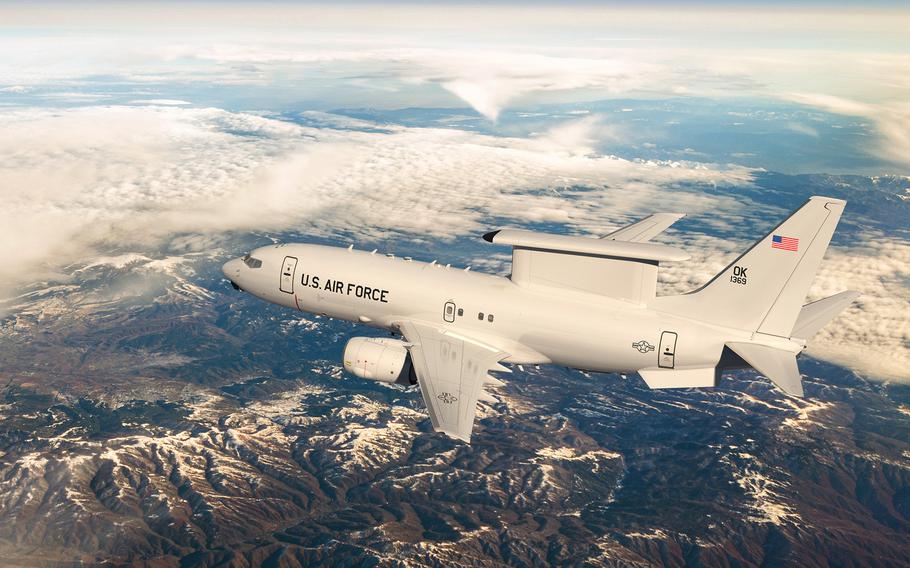
An artist’s depiction shows an E-7A in flight. The E-7A is the Defense Department’s future airborne early warning and control plane, and is scheduled to replace the E-3 Sentry Airborne Warning and Control System. (U.S. Air Force)
The Air Force has awarded Boeing up to $1.2 billion to develop its latest airborne early warning and control plane.
The new E-7A Wedgetail will replace the decades-old E-3 Sentry, with the first new planes expected to be in the air by 2027, the Air Force said in a statement Tuesday.
The aircraft use embedded radar to detect enemy aircraft and weapons. They also manage air battles and are often quickly deployed to overseas crisis areas.
The service expects the E-7A to be the principal way it tracks and reports airborne activity to joint commanders, said Andrew Hunter, the Air Force assistant secretary for acquisitions, technology and logistics.
The E-7A’s radar is more advanced than its predecessor, and it’s expected to be able to direct other planes under a wide range of environmental and operational conditions, the Air Force said.
The Australian, British, South Korean and Turkish air forces already use the E-7 aircraft. Boeing said it’s developing two new variants for the U.S., without providing details on the differences.
The E-7 typically has about a dozen people on board, including two pilots, according to Boeing.
Production of the U.S.-model E-7A is expected to start in 2025. The Air Force expects to have 26 E-7As in its inventory by the 2030s.
In the meantime, ongoing modernization of the E-3 Sentry aircraft will be sufficient to meet the Air Force’s needs, Hunter said.